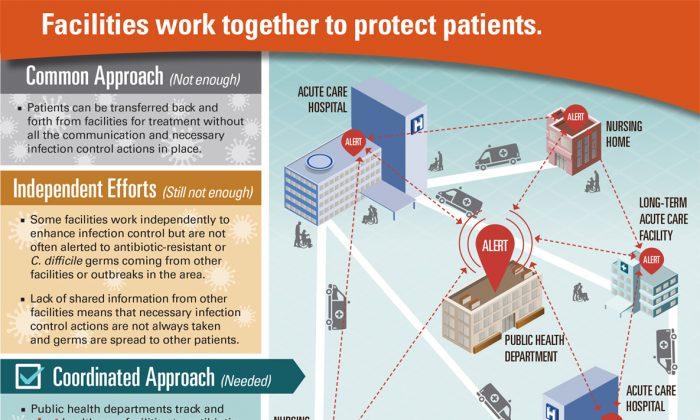Unless health departments and hospitals coordinate care and practice good antibiotic stewardship, the superbugs will get the drop on us. According to a new report from the Centers for Disease Control, drug-resistant infections and Clostridium difficile (C. difficile) are set to spread.
We could enter a post antibiotic world in our lifetime. If it’s our fate, I guess we will do the best we can to navigate such a world. But I hope we do not have to.
Last weekend my brother-in-law and others made a genealogical side trip to a Lutheran Church in western North Carolina, where generations and generations of his ancestors lay. As we went further back, the marble headstones got richer in lichens and more weathered, and harder to read. One thing stood out: how little time many of the respected forbears had on Earth. We speculated that many of them died of things a course of antibiotics could have fixed. That safety net we count on today could soon be lost.
The worst of the antibiotic-resistant superbugs is the deadly CRE (carbapenem-resistant Enterobacteriaceae), which has become immune to all or nearly all drugs.
Superbug MRSA (methicillin-resistant Staphylococcus aureus) causes pneumonia and sepsis.
Pseudomonas aeruginosa causes bloodstream infections.
Superbug C. difficile is not generally resistant to antibiotics, but it infects people after their good bacteria are killed by antibiotics. It causes deadly, severe diarrhea and is at historically high rates, according to the CDC.
All of these superbugs are associated with health care settings. All can spread and take hold when people are transferred, for example from a nursing home to a hospital.
These organisms cause 2 million illnesses and at least 23,000 deaths in America each year. If public health departments and hospitals change the way they do things, they could reduce such infections by 70 percent, according to the CDC’s model.
The most key thing the CDC recommends is that public health departments take the lead. Even if individual hospitals and other facilities do well, it won’t be enough. The crucial gap is people not knowing who arrives at a place carrying a superbug, or when a superbug outbreak is developing that needs extra precautions.
Public health departments should track drug-resistant germ outbreaks in their area. They should watch for germs coming from other facilities, and alert health care facilities, according to the CDC. They should implement the best possible infection-control practices. Basic room cleaning and laundry and hand washing are crucial.
Hospitals should devote money to janitorial staff, pay them well and give them time to do their jobs carefully. No overbooked contract staff, no undertrained temporary workers.
“Patients and their families may wonder how they can help stop the spread of infections,” said Michael Bell, M.D., superbug expert and deputy director of CDC’s Division of Healthcare Quality Promotion, in a statement from the CDC.
“When receiving health care, tell your doctor if you have been hospitalized in another facility or country, wash your hands often, and always insist that everyone have clean hands before touching you,” Bell said. “Ask your health care providers what they and the health care facility in your area do to coordinate with others to protect you and your family from an antibiotic-resistant or C. difficile infection.”
The CDC modeled the numbers for superbugs if the status quo remains the same. It also checked what would happen if health organizations did better individually. And it modeled the best case, if public health departments take the lead and coordinate the attack on resistant infections. There’s a big difference. Using 10 health facilities as an example:
“With the Common Approach (status quo), CRE will impact 12 percent of patients. 2,000 patients will get CRE.
With Independent Efforts, CRE will impact 8 percent of patients. 1,500 patients will get CRE.
With Coordinated Approach, CRE will impact 2 percent of patients. 400 patients will get CRE.”
CDC Director Tom Frieden, M.D., MPH said, “The bottom line is we now know how bad the problem is and what can be done,” at a media telebriefing about the report.
This seems worth tackling to me.
Mary Silver lives and works in Atlanta.





Friends Read Free